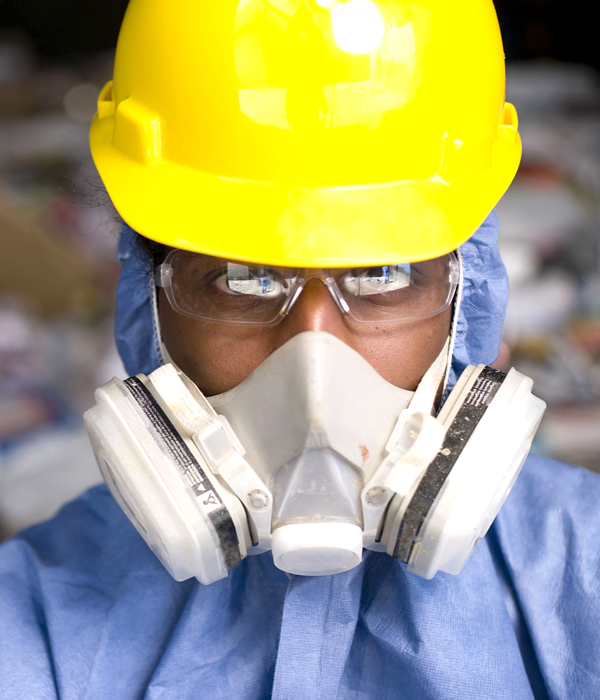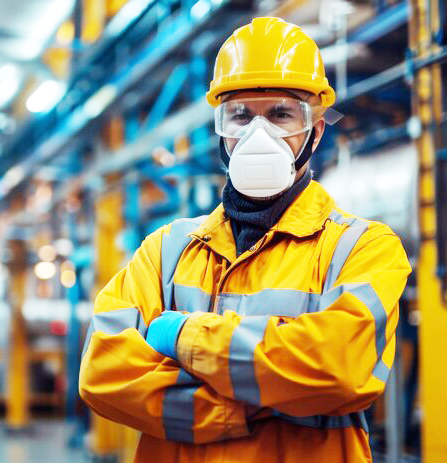Our Services
Chemical & Dust Sampling
Gabriel EHS is a Chemical & Dust Sampling consultant that offers professional dust and air quality services, including as management and assessments, to a variety of industries.
We can guarantee the best quality of service available. Our skilled specialists presently provide our Ambient Chemical and Dust Sampling services to a number of well-known clients. They have accumulated a great deal of experience in the sector.
- Chemical Exposure Assessments.
- Total and Respirable Dust Sampling.
- Welding Fumes Sampling.
- Metal Fumes Sampling.
- Volatile Organic Compound Sampling.
- All the listed Chemicals in NIOSH Manual of Analytical Methods (NMAM).
Indoor Air Quality Survey
Because of the interaction of several elements, such as ventilation systems, building design, tenant behavior, and outside impacts, managing indoor air quality can be challenging.
We can guarantee the best quality of service available. Our skilled specialists presently provide our Ambient Chemical and Dust Sampling services to a number of well-known clients. They have accumulated a great deal of experience in the sector.
Frequent testing and solutions for indoor air quality are essential since unclean ducts exacerbate allergies and respiratory conditions by recirculating pollutants, dust, and dander. While radon gas from the earth causes major health dangers, building materials and coatings can produce volatile organic compounds (VOCs).
To create a more comfortable and healthy atmosphere, Gabriel EHS maintains buildings and cleans ducts to get rid of Harmful Pollutants.
Issues with Indoor Air Quality
- Pollutants.
- Ventilation.
- Moisture and Humidity.
- Occupant Factors.

Fume Hood Validation
To make sure laboratory fume hoods are operating well and giving users the protection they need, fume hood testing assesses their functionality.
This entails a number of tests that gauge the containment and general operational effectiveness of the fume hood. The objective is to confirm that the fume hood uses appropriate exhaust ventilation to eliminate dangerous fumes, vapors, and dusts.
To guarantee the correct operation and security of fume hoods in labs, fume hood validation is an essential procedure. To ensure that the fume hood satisfies predetermined performance standards, the validation process usually include testing a number of parameters.

Ventilation Measurements
In order to understand indoor quality in homes, workplaces, schools, and industries, ventilation surveys are essential. Based on the results of these surveys, ventilation system repairs can be made. Employee productivity is increased when indoor air quality is appropriate, according to research. It lowers employee chemical exposure, accidents, and absenteeism, which boosts company profits.
Measurements of air exchange, pressure, carbon dioxide, and particulate matter concentrations are made through the primary ventilation system flow-paths, and building inspections are used to gather information for ventilation surveys.

Noise Surveys
- Area Noise Measurements
- Personal Noise Measurements

Heat Stress Surveys
Overexposure to heat at work is a major health risk to both workers and employers, since it can lead to severe heat-related illnesses and, in certain situations, even death. Heat-related injuries are not limited to hot weather; they can happen in any setting. Learn how to reduce the danger of heat-related illnesses or injuries so that you can protect your staff.
If workers disregard safety rules and regulations, working in extremely hot temperatures can lead to stress, illnesses, or injuries.
A variety of symptoms associated with exposure to intense heat are referred to as heat stress. These include burns, rashes, cramps, abrupt heart failure, heat exhaustion, and heat stroke.

Ergonomic Surveys
To ascertain the degree of ergonomic risk associated with repetitive operations, manual handling, pushing and pulling, or requiring the adoption of awkward postures, an ergonomics survey can be carried out. You may find the HSE guidelines on workplace ergonomics here: Human Factors and Ergonomics in the Workplace
From an ergonomics standpoint, any work tasks involving the aforementioned can be evaluated.

Illumination Surveys
Your go-to resource for thorough illumination survey services is Gabriel EHS. We are aware of how important adequate lighting is to maintaining people’s safety and wellbeing. Our cutting-edge illumination survey solutions are made to evaluate and enhance lighting, resulting in a safer and brighter space. See how you can benefit from our services.
At a reasonable price, we offer workplace illumination survey services, residential area illumination survey services, public space illumination survey services, and custom illumination survey services.

Respirator Fit Testing
Employers use respirator fit testing to confirm that workers can appropriately wear the breathing gear required to carry out their duties. Through a physical examination, fit testing verifies that the respirator’s facepiece securely fits the user’s face to shield them from any dangers.
One of the most crucial components of any respiratory protection program is respirator fit testing, which makes sure that workers’ respirators fit their faces properly and provide protection from respiratory risks at work.
Qualitative Fit Test: This pass/fail test uses the user’s sense of taste and smell to identify air leaks into the facepiece. The degree of leakage into the facepiece cannot be measured by qualitative fit testing.
Quantitative Fit Test: A quantitative fit test does not rely on an employee’s sense of taste or smell; instead, it uses extremely advanced equipment to quantify the actual quantity of air leakage into the facepiece.

Blood Lead Level testing
A lead test is a blood test that determines how much lead is in your body. You might not even be aware that you have been exposed to lead, which can be toxic at high concentrations. Due to their smaller bodies and increased likelihood of inadvertently consuming lead sources, children are thought to be more susceptible to lead poisoning than adults.
However, anyone who consumes a high enough dose of lead might suffer negative effects from lead poisoning, so it’s critical to understand the symptoms and your individual risk of exposure.

Corporate Training on Industrial Hygiene
Employee health and wellbeing are vital to the success of the company. With an emphasis on recognizing, controlling, and reducing health hazards at work, this industrial hygiene training gives learners a thorough understanding of occupational health and industrial hygiene. Organizations may safeguard their employees, lower absenteeism, and improve performance by putting in place efficient occupational health programs.
- Noise Management
- Chemical Hazard Management and Communication
- Heat Stress Management
- Office Ergonomics
- Industrial Hygiene and Occupational Health

Sectors we Served

















